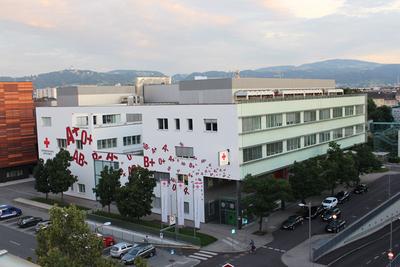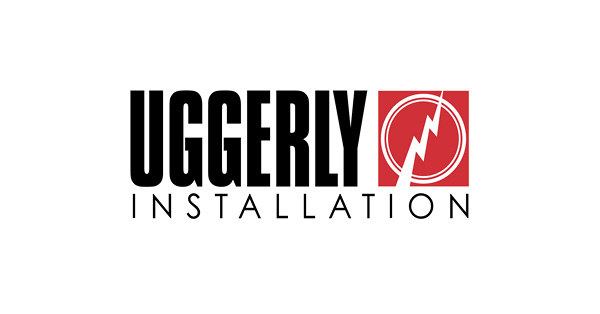The Austrian Red Cross and Paessler PRTG save lives
About the Austrian Red Cross
The Red Cross saves lives. To do so, it needs blood. In Upper Austria, this blood is collected, managed, and distributed at the Red Cross blood donation center in Linz. Stephan Federsel is in charge of IT at the Austrian Red Cross division of Upper Austria, as well as at the center in Linz.
In order to promptly detect errors (and prevent potential damage and failures), Stephan and his team must be able to keep a constant eye on the availability and performance of the entire IT infrastructure. PRTG Network Monitor, a software developed by the monitoring specialists at Paessler AG in Nuremberg/Germany, lets them do this. David Jungwirth, a member of Stephan’s team, is responsible for the implementation of PRTG at the blood donation center.
Jungwirth uses a wide variety of standard features in PRTG to continually monitor the basic functions of his infrastructure.
These include Ping sensors for monitoring overall availability, WMI sensors for monitoring data carriers, sensors for monitoring the validity of SSL certificates or the runtime of Windows systems, and SNMP sensors for monitoring power supplies, fans, and other hardware components.
In addition to these standard features, PRTG offers a large selection of templates and interfaces that make it possible to use custom scripts with PRTG, providing for numerous expansion possibilities.

“We rely on the comprehensive and reliable monitoring of devices and systems to ensure the proper functioning of our IT – and ultimately the processes and services of the center. PRTG is not only effective, but also helps us save resources.”
David Jungwirth, Austrian Red Cross
PRTG works hand-in-hand with soffico Orchestra
The blood donation center uses soffico Orchestra as a communication server. Orchestra collects, transfers, and distributes data among the various devices and applications, and thereby serves as the basis for all communication at the center. Disruptions in Orchestra can seriously impact the center’s communication.
David Jungwirth therefore monitors the server with PRTG to make sure everything is always running smoothly. In particular, he uses the software’s HL7 sensors. HL7 (“Health Level 7”) refers to a set of standards that enables (and optimizes) the transfer of data between the applications of healthcare providers.
PRTG comes with special preconfigured sensors that allow for the monitoring of systems based on these HL7 standards, without accessing patient or other sensitive data.
With these sensors, PRTG can send HL7 messages to the respective interfaces and check the responses for possible interruptions.
If, for example, the uploading of delivery slips is interrupted in Orchestra, then PRTG notifies the team at once. Thanks to PRTG, malfunctions can be immediately identified and corrected before serious problems arise.
The software also monitors the center’s Oracle databases, which helps ensure that Orchestra is functioning properly – in fact, database irregularities make it possible to draw conclusions regarding the processes that generate or store data. Jungwirth uses preconfigured PRTG sensors as well as his own scripts, which he integrates into PRTG with the help of so-called custom sensors.
Among other things, he monitors interfaces at the database level. If the monitored values exceed predefined criteria, then this means the data processing has been disrupted. The team is notified promptly and can immediately go about troubleshooting the issue.
The importance of flexibility
PRTG custom sensors play an extremely important role in David Jungwirth’s monitoring: “For me, the right mix is crucial to any monitoring solution. I would hate to have to develop every function myself; the respective tool should provide the core monitoring functions as simple, out-of-the-box features. I also expect a certain amount of flexibility which allows me to implement creative solutions for individual requirements in as convenient a way as possible.
PRTG comes with templates and interfaces that make it extremely easy to integrate my scripts. At the same time, with PRTG, I get a turnkey tool that takes care of most standard monitoring tasks all by itself.” For example, Jungwirth uses the PRTG REST Custom Sensor to monitor (via API) the fans, temperature, and network connections of the composable, software-defined infrastructure deployed by the Red Cross division in Upper Austria.
Automation with PRTG
Flexibility and innovation are extremely important to Jungwirth. Time and again, PRTG relieves David and his team of routine tasks, all the while improving the reliability of their systems by not only rooting out, but also solving problems by way of automation. Here’s an example of a problem encountered by the team:
One of its services was running, but not writing anything to the database. This always seemed to happen when the database was moved from one node in the cluster to another.
Jungwirth describes how he solved the problem: “We set up PRTG to read the event logs of the service. If the service is no longer able to access the database, then this information is recorded in the service’s EventLog and immediately detected by PRTG via WMI. The software then automatically triggers a script that restarts the service. The service reestablishes its connection to the database and the problem is solved.”
Use of PRTG maps
PRTG maps are also used to help David’s coworkers in the laboratories and production areas with their work. The blood donation center of the Red Cross division of Upper Austria uses check-in and check-out mechanisms during processing.
However, sometimes a check-in cannot be fully completed. This problem can be detected by simply monitoring tasks and servers: time and again, a product – and the subsequent processes that depend on it – were unavailable because a product was still being processed.
PRTG queries the database and displays the information on an easy-to-read dashboard, allowing workers to quickly see when a product is still being processed by another user and therefore unavailable.
Conclusion
PRTG is essential to the IT of the blood donation center. David Jungwirth explains: “We rely on the comprehensive and reliable monitoring of devices and systems to ensure the proper functioning of our IT – and ultimately the processes and services of the center. PRTG is not only effective, but also helps us save resources. It automatically restarts services, which greatly relieves our helpdesk team while reducing our need for on-call shifts. Thanks to prompt PRTG alerts, we can optimize our maintenance work and make sure we never run out of hard disk space (among other things). PRTG automatically informs us of the need for system updates, saving us lots of time and making us more efficient.”
In August 2022, PRTG became the official centralized monitoring tool for the entire IT of the Red Cross of Upper Austria. Jungwirth and his team at the blood donation center in Linz now actively share their know-how with the teams at the Red Cross. Among other things, additional dashboards are planned that will clearly display complex processes and areas, thereby making the work of helpdesk employees even easier.
Get to know more happy PRTG customers
Customer success story Uggerly Installation & PRTG
The IT team at Uggerly Installation describes PRTG as a good all-rounder that many more companies should know about. ➤ Read the complete customer success story now!
Customer success story Resolvit & PRTG
PRTG lets the IT team at Resolvit spend less time worrying and more time giving clients exactly what they need. ➤ Read the complete customer success story now!
Customer success story SKY Perfect JSAT Corporation & PRTG
Multi-channel pay TV operator SKY Perfect JSAT installed PRTG for traffic monitoring within its satellite communication services. ➤ Read the complete customer success story now!



